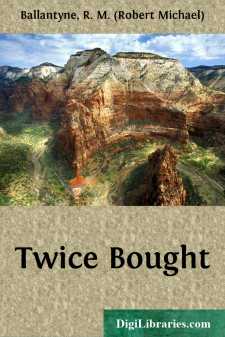Categories
- Antiques & Collectibles 13
- Architecture 36
- Art 48
- Bibles 22
- Biography & Autobiography 813
- Body, Mind & Spirit 142
- Business & Economics 28
- Children's Books 17
- Children's Fiction 14
- Computers 4
- Cooking 94
- Crafts & Hobbies 4
- Drama 346
- Education 46
- Family & Relationships 57
- Fiction 11829
- Games 19
- Gardening 17
- Health & Fitness 34
- History 1377
- House & Home 1
- Humor 147
- Juvenile Fiction 1873
- Juvenile Nonfiction 202
- Language Arts & Disciplines 88
- Law 16
- Literary Collections 686
- Literary Criticism 179
- Mathematics 13
- Medical 41
- Music 40
- Nature 179
- Non-Classifiable 1768
- Performing Arts 7
- Periodicals 1453
- Philosophy 64
- Photography 2
- Poetry 896
- Political Science 203
- Psychology 42
- Reference 154
- Religion 513
- Science 126
- Self-Help 84
- Social Science 81
- Sports & Recreation 34
- Study Aids 3
- Technology & Engineering 59
- Transportation 23
- Travel 463
- True Crime 29
The Young Fur Traders
Categories:
Description:
Excerpt
In writing this book my desire has been to draw an exact copy of the picture which is indelibly stamped on my own memory. I have carefully avoided exaggeration in everything of importance. All the chief and most of the minor incidents are facts. In regard to unimportant matters, I have taken the liberty of a novelist—not to colour too highly, or to invent improbabilities, but—to transpose time, place, and circumstance at pleasure; while, at the same time, I have endeavoured to convey to the reader’s mind a truthful impression of the general effect—to use a painter’s language—of the life and country of the Fur-Trader.
R.M. Ballantyne.
Edinburgh, 1856.
Chapter One.
Plunges the reader into the middle of an Arctic winter; conveys him into the heart of the wildernesses of North America; and introduces him to some of the principal personages of our tale.
Snowflakes and sunbeams, heat and cold, winter and summer, alternated with their wonted regularity for fifteen years in the wild regions of the Far North. During this space of time the hero of our tale sprouted from babyhood to boyhood, passed through the usual amount of accidents, ailments, and vicissitudes incidental to those periods of life, and finally entered upon that ambiguous condition that precedes early manhood.
It was a clear, cold winter’s day. The sunbeams of summer were long past, and snowflakes had fallen thickly on the banks of Red River. Charley sat on a lump of blue ice, his head drooping and his eyes bent on the snow at his feet with an expression of deep disconsolation.
Kate reclined at Charley’s side, looking wistfully up in his expressive face, as if to read the thoughts that were chasing each other through his mind, like the ever-varying clouds that floated in the winter sky above. It was quite evident to the most careless observer that, whatever might be the usual temperaments of the boy and girl, their present state of mind was not joyous, but, on the contrary, very sad.
“It won’t do, sister Kate,” said Charley. “I’ve tried him over and over again—I’ve implored, begged, and entreated him to let me go; but he won’t, and I’m determined to run away, so there’s an end of it!”
As Charley gave utterance to this unalterable resolution, he rose from the bit of blue ice, and taking Kate by the hand, led her over the frozen river, climbed up the bank on the opposite side—an operation of some difficulty, owing to the snow, which had been drifted so deeply during a late storm that the usual track was almost obliterated—and turning into a path that lost itself among the willows, they speedily disappeared.
As it is possible our reader may desire to know who Charley and Kate are, and the part of the world in which they dwell, we will interrupt the thread of our narrative to explain.
In the very centre of the great continent of North America, far removed from the abodes of civilised men, and about twenty miles to the south of Lake Winnipeg, exists a colony composed of Indians, Scotsmen, and French-Canadians, which is known by the name of Red River Settlement. Red River differs from most colonies in more respects than one—the chief differences being, that whereas other colonies cluster on the sea-coast, this one lies many hundreds of miles in the interior of the country, and is surrounded by a wilderness; and while other colonies, acting on the Golden Rule, export their produce in return for goods imported, this of Red River imports a large quantity and exports nothing, or next to nothing. Not but that it might export, if it only had an outlet or a market; but being eight hundred miles removed from the sea, and five hundred miles from the nearest market, with a series of rivers, lakes, rapids, and cataracts separating from the one, and a wide sweep of treeless prairie dividing from the other, the settlers have long since come to the conclusion that they were born to consume their own produce, and so regulate the extent of their farming operations by the strength of their appetites....












